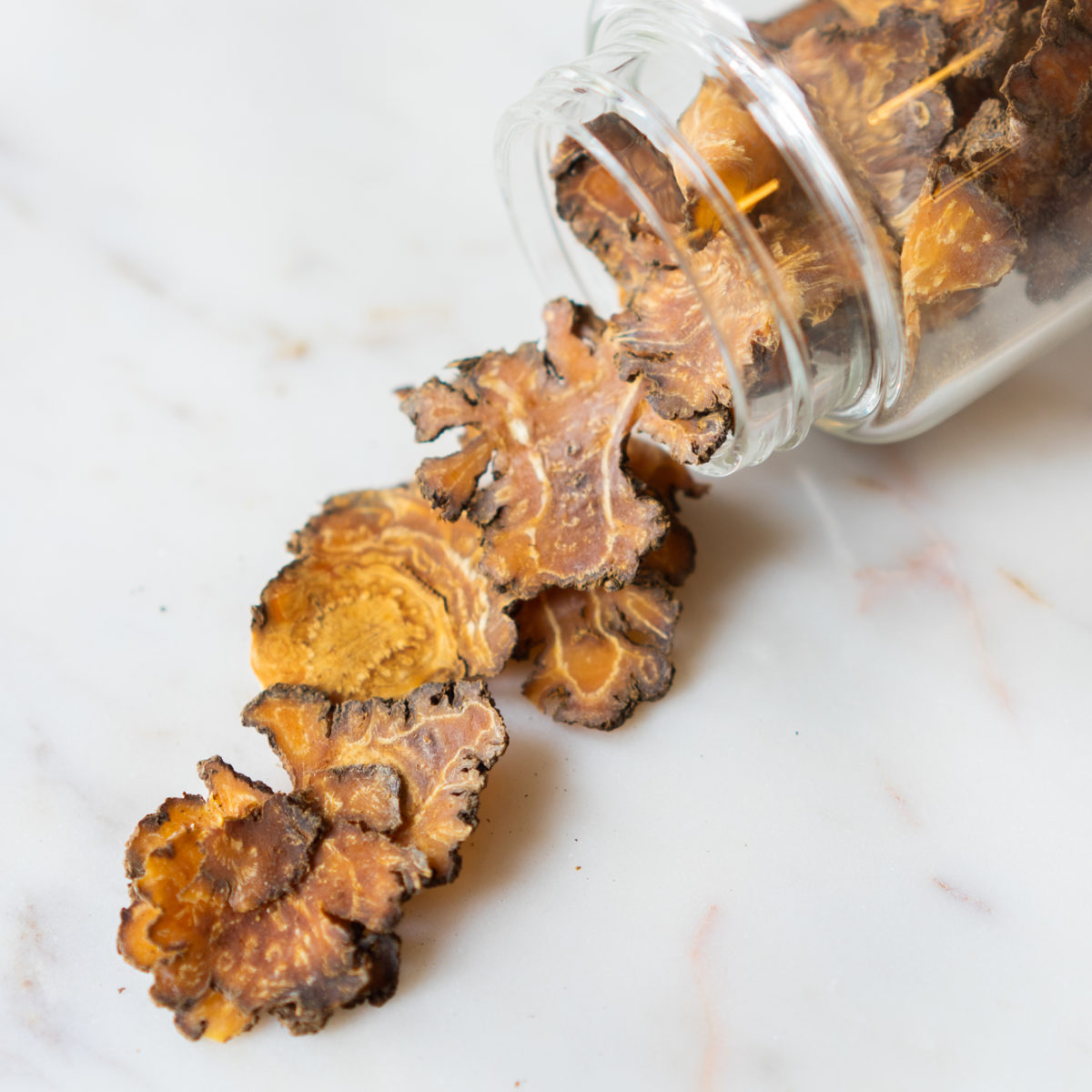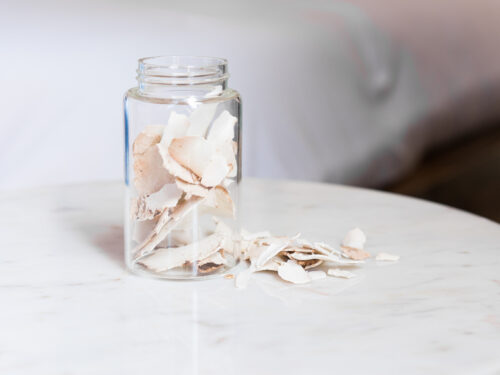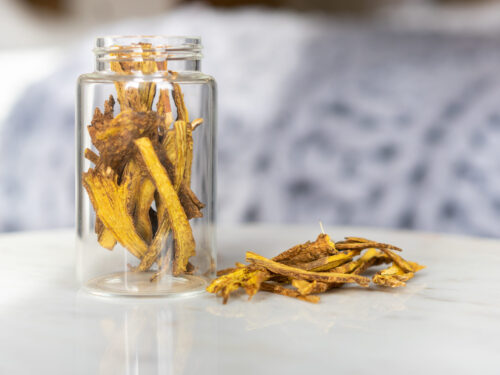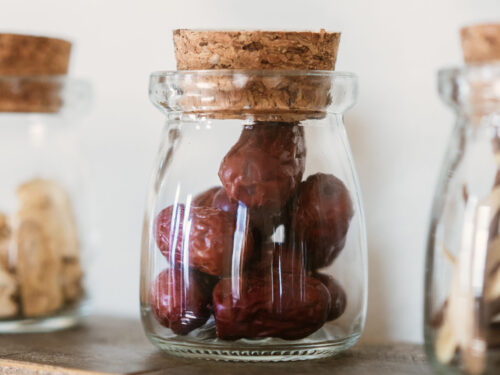
COMMON NAME (Chinese Name)
Szechwan Lovage (Chuān Xiōng)
BOTANICAL NAME
Ligusticum Striatum
USES
The most common historical use of Szechwan lovage rhyzomes is the treatment of vertigo, cardiovascular disease, and headache. Szechwan lovage (and its derivatives) likely owe its significant anti-inflammatory and cardio-protective effects to the way it both improves circulation and inhibits the inflammatory response on a chemical/cellular level.
As a result, Szechwan lovage can be helpful in preventing and controlling the symptoms of a wide variety of cardiovascular conditions, as it is anti-hypertensive, anti-thrombotic, and anti-atherosclerosis, while also being protective of blood vessels. When taken alone or in combination with other herbs, Szechuan lovage supplementation can be an effective therapy for migraine headaches. It can also help alleviate menstrual cramps and joint pain. Novel research also suggests that Szechwan lovage extract can be an effective and side-effect-free topical treatment for reducing the discomfort and cosmetic effects of hypertrophic scarring.
Chinese medicine categorizes szechwan lovage as an herb that regulates blood by moving blood. It classifies the herb as warm and pungent. In TCM, the Liver is responsible for maintaining a normal menstrual cycle. Szechwan lovage primarily affects the Liver, Gallbladder, Pericardium, Ren, and Chong meridians so it’s often used for menstrual issues. It makes up one quarter of the important blood-building formula Si Wu Tang, with rhemannis, white peony and dang guik. Si Wu Tang regulates the Chong Mai and Ren Mai, major meridians associated with reproduction.
PREPARATION & ADMINISTRATION
These supplements use the dried rhizome of the Szechwan lovage plant, and are available for purchase in powder, capsule, and extract forms (as well as dried, sliced rhizomes themselves). The most popular administrations are food preparations as well as decoctions and teas. Studies show that the most effective food preparation is steaming, though many recipes call for methods — like stir-frying — that can compromise the medicinal benefits of the raw rhizome.
PRECAUTIONS
Like most herbs that contain volatile oils, there is some risk of side-effects like gastrointestinal upset, dizziness, and abdominal pain. There is insufficient research about other side-effects or contraindications. Still, given its considerable cardiovascular effects, people who have pre-existing cardiovascular conditions or who are taking cardiovascular medications should not take Szechwan lovage supplements without first consulting a physician.
You should consult with a certified herbalist, physician or other qualified healthcare professional before taking szechwan lovage.
REFERENCES
Chen, Zhejie, et al. “A Systematic Review on the Rhizome of Ligusticum Chuanxiong Hort. (Chuanxiong).” Food and Chemical Toxicology, vol. 119, 2018, pp. 309–325., doi:10.1016/j.fct.2018.02.050.
Huang, Jian, et al. “Anti-Inflammatory Ligustilides from Ligusticum Chuanxiong Hort.” Fitoterapia, Elsevier, 23 Aug. 2013,
Litbarg, Natalia O. “Chronic Kidney Disease.” Integrative Medicine (Fourth Edition), Elsevier, 28 Apr. 2017,
Lu, et al. “Interaction of Anti-Thrombotic and Anti-Inflammatory Activities of Commonly Used Traditional Chinese Medicine for Promoting Blood Circulation and Removing Blood Stasis Revealed by Network Pharmacology Analysis.” Acta Pharmaceutica Sinica, vol. 50, no. 9, 2015, pp. 1135–1141.
Wang, Gang, et al. “Lactone Component From Ligusticum Chuanxiong Alleviates Myocardial Ischemia Injury Through Inhibiting Autophagy.” Frontiers in Pharmacology, Frontiers Media S.A., 29 Mar. 2018, https://www.ncbi.nlm.nih.gov/pmc/articles/PMC5884868/.
Wang, Lu, et al. “Phytochemical and Pharmacological Review of Da Chuanxiong Formula: A Famous Herb Pair Composed OfChuanxiong RhizomaandGastrodiae Rhizomafor Headache.” Evidence-Based Complementary and Alternative Medicine, vol. 2013, 2013, pp. 1–16., doi:10.1155/2013/425369.
Wu, Jian-Guo, et al. “Essential Oil from Rhizomes OfLigusticum Chuanxionginduces Apoptosis in Hypertrophic Scar Fibroblasts.” Pharmaceutical Biology, vol. 49, no. 1, Mar. 2010, pp. 86–93., doi:10.3109/13880209.2010.499517.
Yi, T., Fang, J., Zhu, L. et al. The variation in the major constituents of the dried rhizome of Ligusticum chuanxiong (Chuanxiong) after herbal processing. Chin Med 11,26 (2016) doi:10.1186/s13020-016-0098-5



